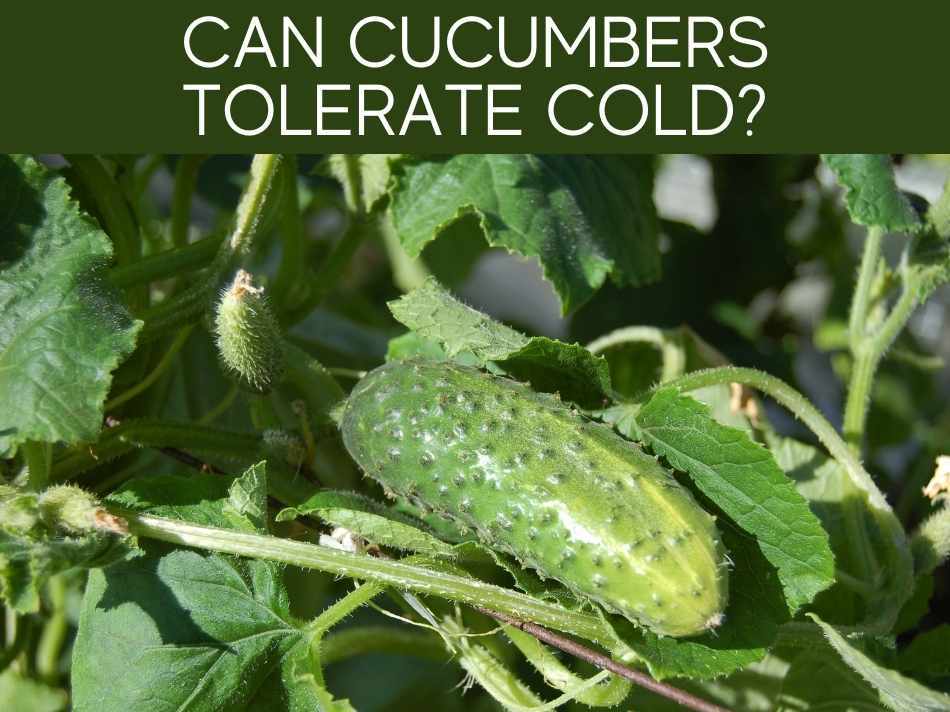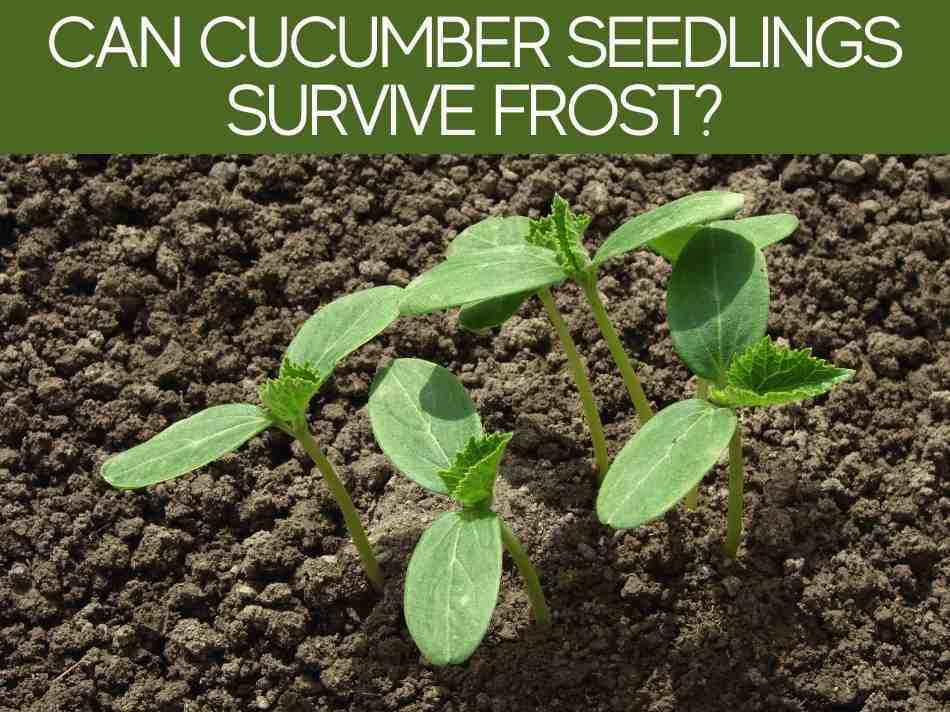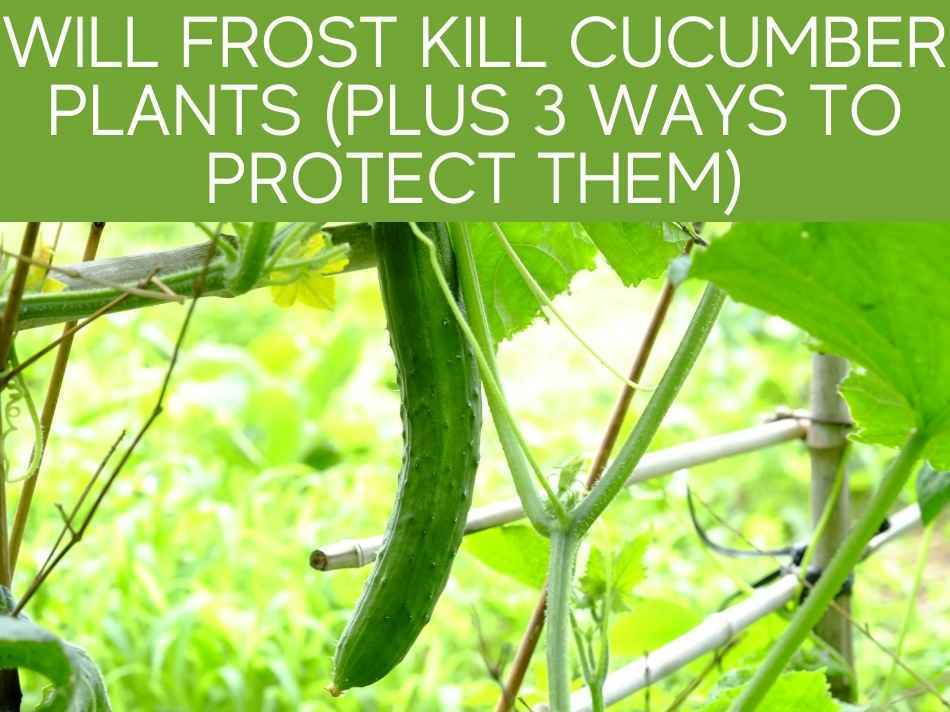Cucumbers are a tasty garden vegetable, but they’re a warm weather crop and are sensitive to cold. Frost can cause some damage, but will frost kill cucumber plants? There are a few things you can do, at least to make sure that the effects are not quite as bad as they might be.
The optimum temperature for cucumber plants is 77 – 95°F (25°C and 35°C). Seeds typically won’t germinate below 50°F (10°C). Frost may harm, or even destroy, cucumber crops. Cucumber plants can be protected using row covers, cloches, and planting in sheltered areas.
It’s possible that temperatures even slightly above 50°F (10°C) may have little, or no, effect on your cucumber plants. Just a note of caution, though, this does rely on many factors, such as the area you live in, the general ambient temperature and the time of the latest frost in the area.
Depending on the factors in your situation, you should choose the best ways to lessen the effects of low temperatures on your cucumber plants..
What temperature can cucumbers tolerate?

The general and universal description of cucumbers is that they are a ‘warm weather crop’ and will do well in a slightly humid climate In fact, the optimum temperature for growing cucumbers is 77°F – 95°F (25°C – 35°C).
Despite this, though, cucumbers can be remarkably hardy and can tolerate quite a wide range of temperatures.
This will mean that they can be grown successfully in a range of areas.
However, this doesn’t necessarily mean that they can tolerate very high and very low temperatures.
In fact, experiments into the effects of temperature on cucumber plants show that paying attention to the effect of cold is not the only thing to be aware of, because both low and high temperatures can damage them.
So, while we are concerned, in this article, with the effects of frost on cucumber plants, don’t ignore the fact that really high temperatures, above 86°F (30°C), will cause thermal damage, the first sign of which will be the leaves wilting.
How a cucumber plant tolerates temperatures can depend on the type, because different varieties have a different temperature tolerance.
The Beit Alpha variety, for example, has a middle Eastern heritage and has a higher heat tolerance than other varieties, while the Socrates cucumber tolerates colder temperatures relatively well.
The effects of colder temperatures on the plants are more significant than those of higher temperatures, because they can significantly damage, or even kill, the plants.
If you’re growing tomatoes, check out our complete article on whether 40 degrees at night is too cold for tomatoes.
Can cucumbers tolerate cold?

You’d think that a warm weather plant, like the cucumber, would not be able to tolerate cold temperatures.
Of course, they’ll be sensitive to colder temperatures, but that is not consistent with all cucumbers planted in all areas..
Cucumbers can actually tolerate cold to a certain extent, but this depends on some circumstances.
For example, the variety of plant (eg. the Socrates cucumber), the coldest temperature recorded in a region and the time of planting, etc.
One of the most noticeable effects of cold on cucumbers is the rate of development of the plants.
Low temperatures can slow down the rate at which your plants grow.
So, in a region where the lowest temperature is above 50°F (10°C), the plants will be more tolerant of cold than those in colder areas.
Wherever you plant them, the cucumbers may tolerate the cold, but germination will generally take longer at any temperatures that are cooler, such as from 50°F to 60°F (10°C – 16°C).
In temperatures under 50°F (10°C), it is unlikely that any germination will take place.
When the temperatures sink to this low, or even close to freezing (32°F/0°C), frost is something you will need to be very conscious of.
Will frost hurt cucumber plants

Frost is the specific name given to ice crystals that form on plants in the early morning in winter and is unavoidable at freezing temperatures.
Because cucumbers are generally sensitive to cold, even a slight frost can damage the plants and the fruit.
In fact, it is possible that any temperature below 33°F (1°C) can cause at least some form of damage.
When the temperature is at freezing point (32°F/0°C), or below, the water in the cells of the plant actually freeze.

This means that the rest of the plant can’t get water.
The effect of this lack of water can be seen when the leaves begin to shrivel and turn dark.
In addition, the fruit itself may also crack.
Even though frost is likely to damage a cucumber plant, it will not always kill them.
So don’t panic and begin cutting off damaged leaves!
The plant itself may not be dead.
Rather, wait for the warmer weather and let the plant re-establish itself if possible.
If your little (or mini) cucumbers are dying, see our full article on causes & fixes.
Will cucumber plants survive frost?

We understand so far that extreme temperatures, which lead to frost, can damage or even kill cucumber plants.
This is most likely when the temperatures drop close to 31° – 33°F (-0.5°C – 0,5°C), so frost (which occurs at 0°C) can severely damage the plants.
However, it’s not certain that the plants will be killed.
Some varieties of cucumber are hardier than others.
Temperatures may not always be so low one winter; or there may not be a late frost one season.
In these cases, the plants should only suffer some harm from frost, at the worst.
You can give your cucumbers an advantage over the frost if you plant them a bit later in the season.
Then, they should be more likely to survive even the late frosts.
Forewarned is forearmed. So use modern technology to find the best time to plant your cucumbers.
Consult the weather service to check when the latest frosts usually occur and plan your planting accordingly.
In these cases, timing will be everything to help your plants survive the frost.
Can cucumber seedlings survive frost?

Perhaps the most important stage of development of a cucumber plant is in the first weeks, when it germinates and grows into a seedling.
Provided the temperatures have not dropped too low and the frost has not been severe, seedlings may survive frost.
However: their growth is likely to be slowed or stunted.
Sometimes, even if there is a more severe frost, the seedlings can still survive.
But they’re likely to be damaged. This will show as brownish areas on the skin of the fruit and the leaves.
Plants that are allowed to germinate inside–like in greenhouses–and then transferred outside when the soil is above 60°F (15°C), will grow well and avoid being damaged by the frost.
How to protect cucumbers from frost

Don’t give up on your cucumber plants, even if cold weather is approaching!
There are things you can do to protect them.
Protecting your cucumbers from the frost means making sure that the cold temperatures can’t get to them.
Even a small change in temperature can make a difference.
So, it’s worthwhile making the effort to cover them, plan the planting, or germinate the seedlings in a warm, protected area.
Protecting cucumbers from frost in a greenhouse

If you have access to a greenhouse, you should consider planting your cucumber seeds in portable containers. Then they can germinate and establish themselves in this protected area.
The conditions in a greenhouse are similar to the weather that a cucumber plant prefers – offering humidity and high temperatures
Research and find out what time after the last frost it’s safe to plant outdoors.
Then work backwards to find the best time to plant. Remember to consult your local weather service for the date of the last frost in your area.
Protecting cucumbers from frost outside

Selecting the correct site for the plants is an important part of protection against frost.
Cucumbers should be planted in a sheltered area, preferably near a wall, or similar barrier. That way, they can be protected from cold winds
When you want to prevent frost damage, possibly the easiest thing to do is to cover them. You can use something like frost cloths, cloches, or row covers.
A cloche is a special, rounded cover for an individual plant, usually made of plastic.
An easy alternative to use is an inverted plastic bucket you can put over each small plant.
A row cover is a lightweight sheet of particular material that can be placed over, or around, individual plants.
It can also be suspended above a row of plants, such as cucumbers.
Using plastic sheets is also an alternative cover. But keep the plastic from touching the leaves of the plants.
You might also want to check out the article on how far apart to plant cucumbers and tomatoes.
In summary

When you decide to grow cucumbers, one challenge you’ll face is the effects of colder temperatures on the plants.
Remember that they prefer warm weather and are sensitive to cold and can be damaged by frost, but it won’t necessarily kill them.
